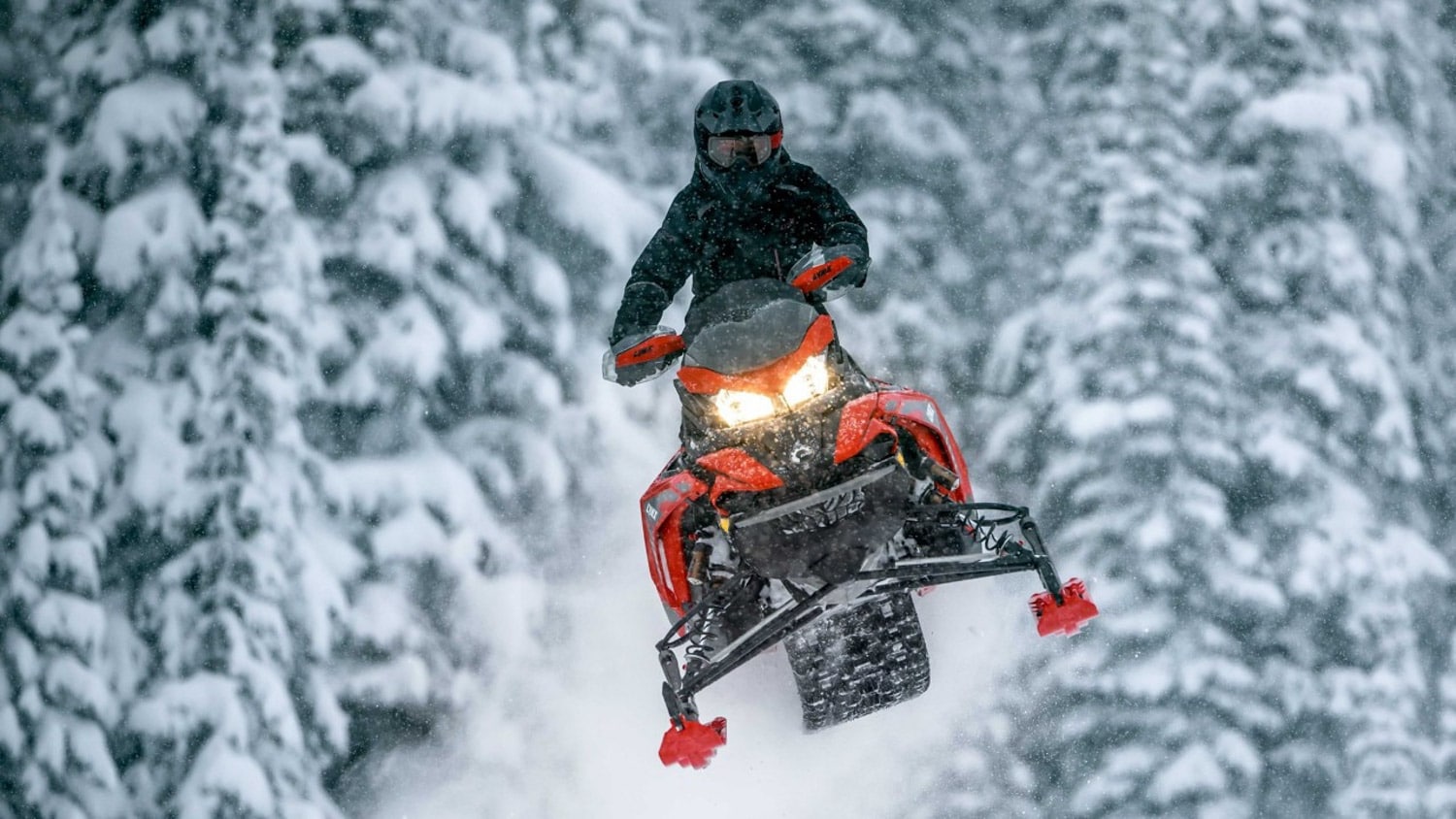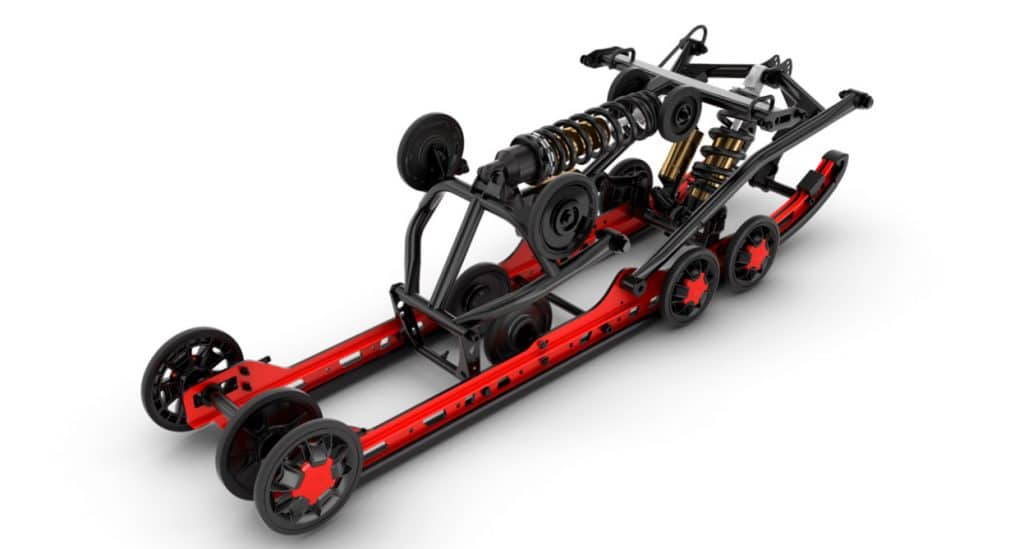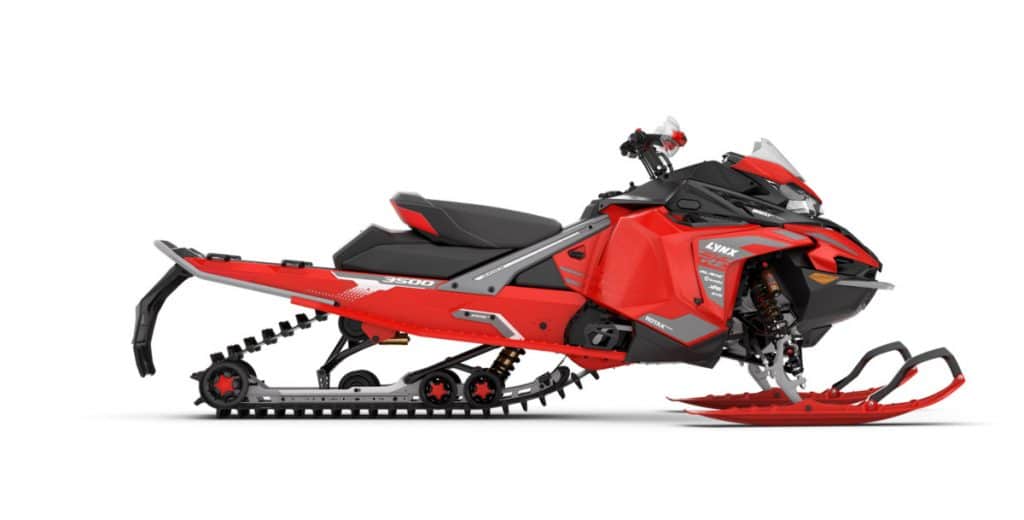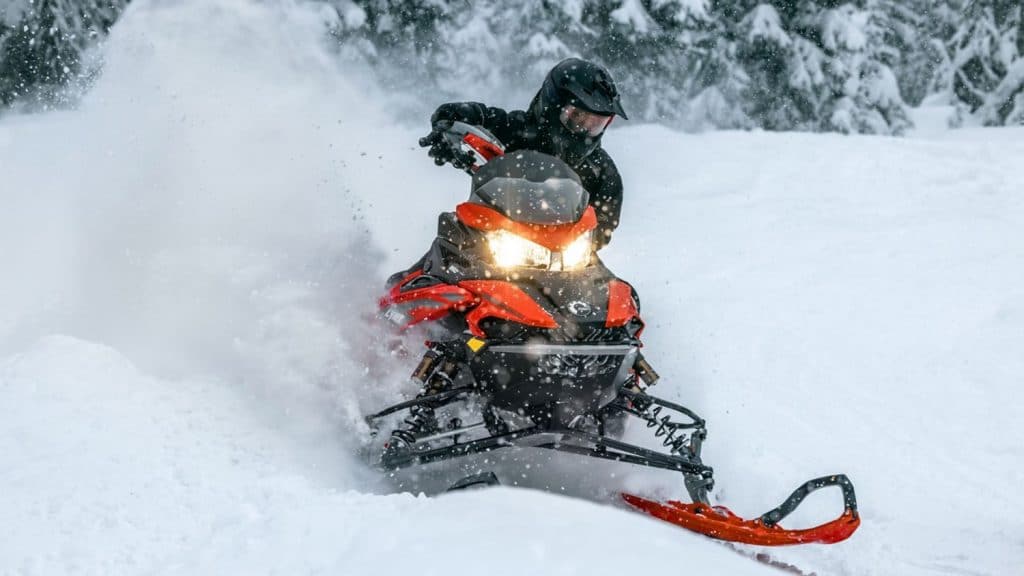You have to go back a long way to celebrate the arrival of a new manufacturer. The very first to design and market a snowmobile was the American Carl Eliason of Wisconsin. In 1927, he produced the Motor Toboggan, equipped with a motor, chain and canvas belt. But it was in 1958 that Joseph-Armand Bombardier developed the snowmobile as we know it today. Although this same inventor already had the invention of the B series snowmobiles, the B7 for seven passengers, he developed the concept of the snowmobile following the loss of one of his sons, when he was unable to get to the hospital in a snowstorm.
In 1971, there were more than 100 different snowmobile companies producing a record number of snowmobiles with more than 495,000 units sold, which has never been equaled today. Us old folks will surely remember Sno-Jet, Sno-Prince, Moto-Ski, Ski-Roule, Kawasaki and many others… It took several years to see a new manufacturer appear, although it was not a new manufacturer, 2022 marked its debut in North America. The Scandinavian company Lynx arrived in Quebec!

Lynx Rave 3500 850
During the 2020-2021 season, we had the chance to test the Lynx Rave 3500 for a few days, and the 2023 Lynx Rave RE version seems identical in every way. This snowmobile is a back-country snowmobile. Without a doubt, it is perfectly designed for Scandinavia, where the trail network is not surfaced, requiring a snowmobile designed for this purpose.
Chassis
The chassis of the 2023 Lynx Rave RE is almost identical to what we know from the Gen4, called Radien, the connoisseurs will recognize the pyramidal structure identical to the Quebec manufacturer. This pyramid frame is extremely rigid in order to cope with the robust conditions of the Scandinavian countries. The main differences with the Gen4 are the slightly different body panels, the very strong rear bumper, with a wider attachment point to the rear tunnel increasing its rigidity.

850 CC Rotax engine!
As for the engine, it’s a familiar one for us in Quebec: the Rotax 850 two-cylinder, two-stroke direct injection engine from ROTAX. Approaching 165 horsepower, this engine is equipped with eRave electronic variable exhaust valves that vary the exhaust opening to maximize engine response at low and medium rpm. The two large injectors are located directly on the cylinder head (head) propelling the gasoline directly on top of the pistons, which minimizes the movement of the gasoline inside the engine.
Clutch
Like the BRPs, the pDrive driven pulley is used, which was introduced in 2017 with the arrival of the Gen 4 chassis. It is a principle of pivoting ramps that push on fixed rollers initiating the movement of the moving part of the pDrive. On the secondary side, engineers continue to rely on the QRS pulley, which was introduced already a few years ago.

LFS+ front suspension
The LFS+ suspension is relatively similar to BRP’s RAS 3, but with even better shocks, none other than the huge KYB 46 millimeter HLCR Kashima shocks. The 42-inch center-to-center ski spacing ensures good stability. We also find very aggressive skis, the Blade XC+. These skis have two overlapping pins of different widths. The combined depth of these two pins is between a DS2 and a DS3 ski from BRP, so they are very aggressive for a trail sled.
Rear suspension PPS3-3500
The PPS3-3500 rear suspension is an extremely progressive suspension that is at its best in extreme conditions. This suspension is uncoupled, which means that the operation of the rear part of the suspension is completely independent from the central part. To manage the damping and rebound, we continue with the same line as the front: the high-performance KYB 46 millimeter HLCR Kashima. The geometry of this suspension is completely new and different from what we usually see. The rear shock absorber is mounted parallel to the chassis, which allows for an extremely progressive suspension, meaning that the suspension becomes stiffer and stiffer as it sinks.
Our test
A bumpy trail is really the ideal playground for the 2023 Lynx Rave RE. Its behavior on the trail is acceptable, however, when the conditions are freshly surfaced, the keel of the Blade XC+ ski causes wobbling and brings more resistance to the handling of the handlebar. In turns, it will become your best asset, providing excellent grip in all conditions. It offers excellent grip on the ground, however, in fast turns, you must counterbalance to avoid lifting the inside ski, especially on the exit of the turn..

The rear suspension is relatively firm and mostly progressive, which means it gets harder as it gets deeper. While the response is excellent when pushing through the big bumps at the end of the day, it still lacks softness over the smaller bumps. KYB’s 46mm HLCR Kashima shocks give back a bit of kickback and lack flexibility in the smaller bumps. That’s the trade-off for a high performance suspension in extreme conditions.
Like our test model from last winter, the rear suspension offers little rolling resistance, which gives it excellent top speeds and very little slowdown when the throttle is released.
Ergonomics are excellent, the riding position is flawless, and it’s easy to switch to a standing position without too much effort. The side body panels are well contoured to allow the rider to dive inward easily when cornering.
Performance-wise, the direct-injected 850 has proven itself since 2017, and it’s beyond reproach. The pairing with the pDrive pulley is excellent and does justice to the 165 HP. Acceleration is spirited and pickup is instantaneous. And as mentioned earlier, top speeds felt very respectable to us despite the loss of power due to the altitude at West Yellowstone.





